
|   |

|   |
Remembering the one and only Shanta Rao - Dr. Sunil Kothari e-mail: sunilkothari1933@gmail.com Pics courtesy: Sai Venkatesh May 16, 2008 Shanta Rao who? Many young dancers ask me. She passed away on 28 December 2007 at her residence at Malleswaram, Bangalore. There was a small note about her death in one of the local newspapers. I was in Chennai and only two weeks after her death did I come to know about it. Many in the dance world expressed shock. Yes, she was a very private person, non-communicative, remaining alone in her own world. She had an aunt Vasanthi who lived with her. Shanta Rao was a contemporary of Balasaraswati, Rukmini Devi, Ram Gopal, US Krishna Rao, Mrinalini Sarabhai, Chandralekha and others. That was the era of the revival of classical dance. A brilliant, prominent dancer, exponent of Bharatanatyam and one of the early women who took to studying Kathakali at Kerala Kalamandalam in the thirties, Shanta Rao was a name to reckon with. Later on in the fifties, she studied Kuchipudi under Vempati Chinna Satyam and Venkatachalapathi Sastri initiated her into Bhamasutram rituals. It led her to create Bhama Nrityam. Hailing from Mangalore, a Saraswat Brahmin, Shanta was the daughter of parents who were freedom fighters. Their home in Bombay in the early thirties was a meeting place for the non-violent rebels of 1931 of the Civil Disobedience Movement. Shanta was also a joint-secretary of Students Union in her school in Bombay. Poets, painters, and musicians also used to meet at her parents' residence. Indeed a very unusual young woman, she studied of all the forms, Kathakali, a preserve of male dancers. She undertook rigorous training under the great Kathakali maestro Ravunni Menon, who taught her this difficult, strenuous art. She made her debut in 1940 at Thrissur before a critical audience consisting of Nambudris and Kathakali experts. She also visited Sri Lanka the same year and studied Kandyan dances under Guru Gunaya. She also studied Bharatanatyam. She went to Pandanallur village to study it under the great master Meenakshisundaram Pillai, who had taught Rukmini Devi, Ram Gopal, US Krishna Rao, Mrinalini Sarabhai and other contemporaries of Shanta Rao. She made her debut in Bharatanatyam at The Music Academy in 1942. Hers was the most unusual style. Forceful, powerful, dynamic. Those not used to such style used to get a shock watching her Bharatanatyam, for it was vigourous and energetic. As critics used to observe, "rather masculine..." 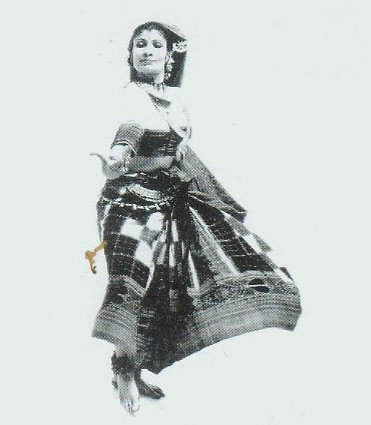 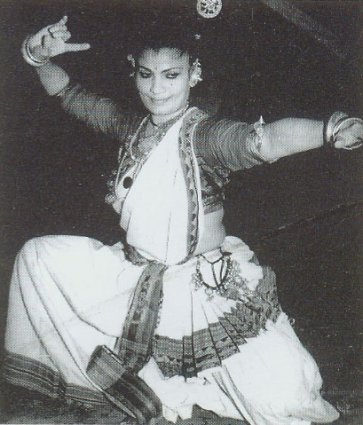 It was in September 1957 in a special issue on Bharatanatyam of Marg quarterly edited by Dr. Mulk Raj Anand that I first time came across a little note on her in a section titled Contemporaries with her photographs. I was watching many dancers' performances during that period and had met Dr. Mulk Raj Anand, who asked me to meet Mohan Khokar, writer on dance and a professor at MS University, Baroda in the Dance Department of the University. Mohan Khokar and I corresponded a lot during those years. Since I was writing on dance in Gujarati for 'Kumar,' an art monthly published from Ahmedabad, I wanted to collect more information on Shanta Rao than what was available in Marg. I read the book 'Dances of India' by G Venkatachalam published by Nalanda Publication, at the Bombay University library. There were articles and life sketches on many dancers including Balasaraswati, Rukmini Devi, Ram Gopal, Thambal Sana and one on Shanta Rao. Later on I read a booklet 'Srimati Shanta Rao' written by G Venkatachalam, her friend, philosopher and guide, which gave some more information. It was published in 1948. And of course 'The Other Mind' a book by Beryl De Zoete, in which there is an entire chapter on her. It so happened that (fifty years ago) in 1958 at Jai Hind College, near Churchgate in Bombay's Indian National Theatre, INT had arranged a performance of Bharatanatyam and Mohiniattam by Shanta Rao. I did not want to miss it. Mohan Khokar had alerted me that her Bharatanatyam was unusual and since I was used to seeing Bharatanatyam of her contemporaries like Chandralekha, Mrinalini Sarabhai, Indrani Rahman and others, I should be ready to see something which was most unusual. I requested Damu Jhaveri, the Secretary of INT, to introduce me to her and interview her. He told me to go to the hotel where she was staying. I called her and was asked to go upstairs. A dancer by name Maya, a young girl, opened the door. Shanta was reclining in her bed. But when she learnt that I was from a newspaper, she told her student Maya, to tell me to see her later on. 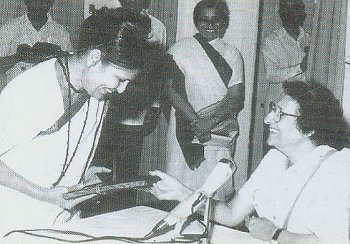  In the evening what I saw was indeed most unusual. The movements were strong, powerful, energetic, but not like other dancers'. I found them stiff, jerky, awkward and influenced by Kathakali. Her Mohiniattam was very impressive. Quite hypnotic. Watching her Bharatanatyam and Mohiniattam, I could not take my eyes off her. Her costumes were gorgeous. She looked like a queen, with necklaces, wrist ornaments, belt, silk costumes of faultless taste. When she entered the stage, one was completely under her spell. I am able to recollect my first impressions even after half a century. I did find it difficult to express the uneasy feelings I had watching her dance and yet not able to get away from watching her. A year later or so, she was to perform again in Bombay. The Director of Asian Music Circle from London, one Mr. Ayana Dev Angadi was in town. I met him through Sonal Mansingh (nee Pakvasa). Mr. Angadi was arranging a tour of Sonal's performances in the South in Bangalore and other places. He knew Shanta well and asked me to go with him and see her at the suite in the Taj Mahal Hotel. She was utterly charming, gracious, warm and affectionate. Dressed as usual in a colourful sari, she was very friendly. The prejudice I had developed against her, after seeing her first performance was gone. She did not sound distant or reserved. I was commissioned to write a cover story on Mohiniattam by The Illustrated Weekly of India sometime in 1967. I was touring the South with my friends Asha Puthli, a well known jazz singer and a vocalist and Indira Jaisingh, who is a well known Supreme Court lawyer now. We were visiting Kerala Kalamandalam. On way back, we stopped at Bangalore as I wanted to meet Shanta Rao. She invited Asha, Indira and me to stay with her at her apartment on Brigade Road near the Post Office. She charmed Asha and Indira. We spoke nineteen to dozen on Mohiniattam, Bharatanatyam and what have you. We never forgot that meeting with her. She at times looked so innocent and childlike. I shall never forget her laughter. Shanta's fame had spread far and wide. She was invited by the legendary violinist Yehudi Menuhin to perform at his Festival of Windsor in 1964. Well known impresario John Coast also arranged her performances abroad. She toured USA, UK, Israel, Germany, Japan, Nepal and several other countries. She received praise world over for her unique art and many awards. I wrote an article in Femina (2nd April 1971) when she received Sangeet Natak Akademi Award and also Padma Shri, and sent her a copy. She was very pleased and slowly our friendship developed. I never missed her recital whenever she performed in Bombay. Chandralekha, Kumudini Lakhia and others were all her ardent admirers. 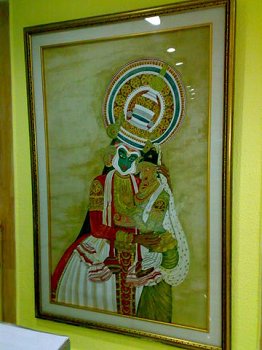 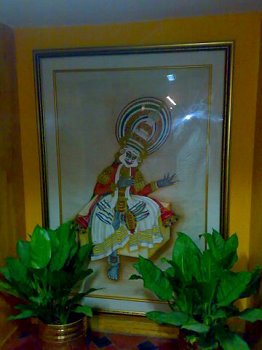 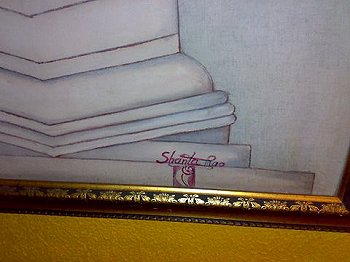 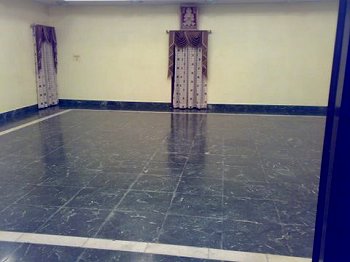 I had written then: 'As a dancer, Shanta Rao possesses a hypnotic stage presence. She betrays a zest and ebullience which seem to be almost obsessive. Her movements have an extraordinary power and force which do not permit the onlooker to take their eyes away from her. The well known dance critic from London, Arnold Haskell had mentioned about her dance in the following terms: "Then she started to dance - a mixture of silk and steel, rippling water and sledge hammer blows. Every movement was crystal clear in a school of dance that combines as none other the mathematical and the dramatic, the abstract and the emotional. And this first impact, tremendous as it was, grew with a cumulative effect that became completely hypnotic. This dancer of genius - and I use the word after careful consideration - is Shanta Rao, known in the East as Fonteyn in the West." Critics have tried to analyze her art but it is not easy to pinpoint what exactly in her art made Shanta a great dancer.' Fernau Hall, ballet critic of The Daily Telegraph in London was an India aficionado, who admired her a lot and also assisted her during her performances for lighting. For my cover story for The Illustrated Weekly of India on Mohiniattam, I had requested her to send her photographs, but when she came to learn that I was also including other dancers like Roshan Vajifdar, Mrinalini Sarabhai, Tara Chaudhary, Kerala Kalamandalam Chinnammu Amma, Ritha Devi, Vyjayanthimala, Kanak Rele and others, she was upset and did not send the photographs. We had of course planned to have her on the cover. My approach was of an overview of Mohiniattam. The editor finally chose Vyjayanthimala's photo taken by Jitendra Arya for the cover, as she was performing along with Bharatanatyam, three to four numbers from Mohiniattam repertoire as she had studied from Chinnammu Amma, a traditional Mohiniattam teacher at Kerala Kalamandalam. Vyjayanthimala had invited me to the theatre and agreed to let Jitendra Arya take the photographs. I still remember the padam 'Ali veni' she had performed movingly. Shanta Rao was very possessive of her Mohiniattam and had sacrificed everything to learn it and was unable to accept the fact that others were also learning it. As a matter of fact, all dancers used to mention that Shanta Rao's Mohiniattam was unique. She also knew it. She never taught anyone as she felt that there was none to whom she could pass on her legacy. She was very upset with me and in no uncertain terms told me so, for having bracketed her with other dancers. I was invited by Dr. Mulk Raj Anand to edit the Marg book on Bharatanatyam for which we requested her to send her photographs. She was not in a mood to do so and declined. Dr. Mulk Raj Anand did write to her praising her contribution but she was adamant. In the first edition we therefore did not carry her photographs. But in other editions we located an excellent sketch of hers by Dr. Homi Bhabha who was a great admirer of hers. We used it on the opening page along with details about chapters. When she came to Bombay to receive Sur Singar Samsad's Nritya Vilas award, she met everyone happily. I looked after her as I was involved with the activities of Sur Singar Samsad. She had by then mellowed a lot. In Bangalore, when Protima Bedi established Nrityagram in 1990, I met her at her fabulous 'palace,' as I described it to her. She received me warmly and showed me the rooms, her drawings, various manuscripts on which she was working, and the exquisite stage and auditorium, ideal for a 250 capacity audience, well designed with a generous grant from Mrs. Indira Gandhi. Kuchipudi dancer Shanta Rati Mishra, who had accompanied me, was completely charmed away by her personality and was also intrigued when Shanta never looked straight in your eyes but at the point between your two eyebrows! Whenever I passed through Bangalore, I made it a point to see her. She welcomed me and shared her thoughts on dance, inquired about her friends and looked happy. But she was a loner. Besides performing in major cities including Kolkata, she had performed in New Delhi for Sonal Mansingh's dance centre. Young dance critics were shocked as her style was different. But she drew a large crowd of her loyal fans. The last time she performed in Delhi was for the Golden Jubilee Swarna Samaroha Festival of India's independence in 1997, organized by Sangeet Natak Akademi. She permitted the Akademi a few excerpts of her performance to be video recorded. Perhaps that is the only recording of her dance one can see, though some of her friends may have information about any recording of her dances, as she never allowed anyone to record or even take photographs. The only documentary film on her was with Films Division which I had seen years ago in Indian Consulate in New York. But that too is not traceable any more. There is a documentary made by BBC on her, but it has been telecast only once. Even in Bangalore her appearances were few. Three years ago on 4th June 2006 at her own theatre honouring KV Ratna, a vocalist and nattuvangam accompanist, she presented Bhama Nrityam. Accompanied by friends, the legendary Ram Gopal, though frail in health, in full regalia with a turban and a silk sherwani had gone to see her and when both met after the performance, Shanta was delighted to receive his compliments! They had performed together years ago when they were young. I had seen a brochure with the two together in a dance pose on the cover, in Ram Gopal's collection in London. Former Director of National Institute of Design (NID) Ashoke Chatterjee, a devotee of Shanta Rao has written a book 'Dances of Golden Hall,' a biography of hers with excellent photographs specially taken by the renowned photographer Sunil Janah and published by Indian Council for Cultural Relations (ICCR). There are also rare sketches by KK Hebbar, and a few photographs in Beryl De Zote's book 'The Other Mind.' I gather from Dr. Kapila Vatsyayan that there is an article on her by Alice Boner also. Barring that, there is precious little available on her. Says Ashoke Chatterjee: "Shanta preferred anonymity rather than risk misuse or dilution of her art. Implicit faith, study, practice, creation and documentation had been Shanta's regimen; each an act of private worship through dance, each to be protected from the distracting demands of a career or performance management. Unswerving in her commitments, each appearance by her had been a feat, surmounting the stringent demands that the dancer makes on herself and on her audience. For years she had followed that without break, an exacting routine for herself even as a young girl, hailed by Sarojini Naidu as Independent India's spring time dancer from the South. This had ensured an undisturbed life, rich with personal achievement as well as in painting and music." He further informed: "Shanta had transcribed her exhaustive study of comparative dance forms into documented resources that are a national treasure, achieved without any external assistance." The trustees of her Shanta Rao Trust have a great responsibility to save it, plus her priceless paintings and a collection of rare books over the years. During my visit last year in April to Bangalore for the World Dance Day celebrations by Lalitha Srinivasan of Nupura School of Bharatanatyam, I met KBK Rao of Select Book Shop near Brigade Road. Shanta used to meet him often and buy books from him. Two days before she passed away, she had gone to see him for settling the bills. KBK Rao spoke about her love for books. He said that she had a collection of books at Udipi also. He also mentioned that she had bought plots of land near Hessarghatta. I made few more inquiries and came to learn about Chiranjeev Singh, former Ambassador to United Nations, who now lives in Bangalore and Ashoke Chatterjee, who are trustees of Shanta Rao's institution and there are two Central Government officers as nominees.  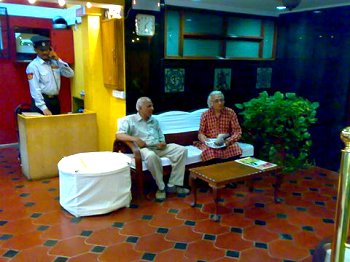 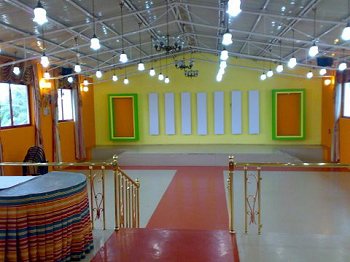 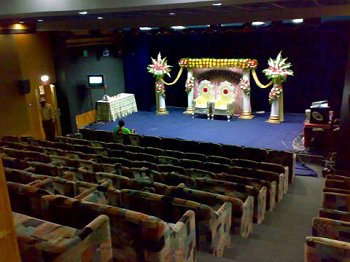 I met Mr. Chiranjeev Singh at Maya Rao's Institute on Maya Rao's 82nd birthday. I requested him to do something so that Bangloreans and those who knew Shanta would 'wake up and do something for her in her memory and salvage the Centre from turning into a marriage reception hall.' It is a great pity that such a legendary dancer's property should end up like this. It was funded by public money and now that it has gone into the hands of a building developer and could only be solved by the intervention of the trustees, Mr. Chiranjeev Singh and Mr. Ashoke Chatterjee, one hopes they will do something. They could negotiate with the builder developer and regain the property for use of dance and music performances by the Malleswaram artistes in this prime location at a modest rate. I did inquire from Vimala Rangachar, Shanta Rao's contemporary and a cultural activist, Lalitha Srinivasan, Shanta's neighbour on the 12th Cross, but they did not know when Shanta passed away, who cremated her and whatever happened to her belongings. The newspapers did not bother, except a small note and then people came to know about Shanta Rao's death. But even after that nothing has been done. Chiranjeev Singh said that he would like to organize a memorial lecture at Alliance Francaise in Bangalore on Shanta Rao by Rajya Sabha Member and eminent scholar Dr. Kapila Vatsyayan, who was very close to Shanta and Ashoke Chatterjee, who has a copy of the BBC film on Shanta that can be screened. Bangalore dancers who knew Shanta can pay tributes to her; they can form a committee to see what can be done to recover Shanta Rao's property which can be used for dance and music performances by the artistes, instead of being hired for marriage receptions!  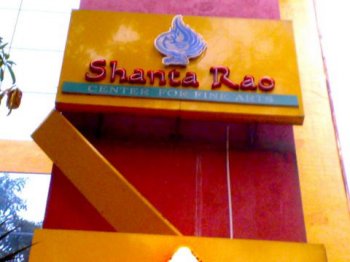 I was deeply pained. Through this article, I hope that those who knew her and admired her would do something in her memory. I have written all this in anguish, so that other dancers who have property would wake up and make proper will for succession. Shanta Rao's several paintings, precious and rare jewellery, ornaments, books, manuscripts, notations of dance forms, and various things she left behind can be traced and kept in a museum. It should be declared as national treasure. Responses  Dr. Sunil Kothari, dance historian, scholar, author, is a renowned dance critic, having written for The Times of India group of publications for more than 40 years. He is a regular contributor to Dance Magazine, New York. Dr. Kothari is a globetrotter, attending several national, international dance conferences and dance festivals. He has to his credit more than 14 definitive works on Indian classical dance forms. Kothari was a Fulbright Professor and has taught at the Dance Department, New York University; has lectured at several Universities in USA, UK, France, Australia, Indonesia and Japan. He has been Vice President of World Dance Alliance Asia Pacific (2000-2008) and is Vice President of World Dance Alliance Asia Pacific India chapter, based in New Delhi. A regular contributor to narthaki.com, Dr Kothari is honored by the President of India with the civil honor of Padma Shri and Sangeet Natak Akademi award. He recently received the Senior Critic award from Dance Critics Association, NYC. |